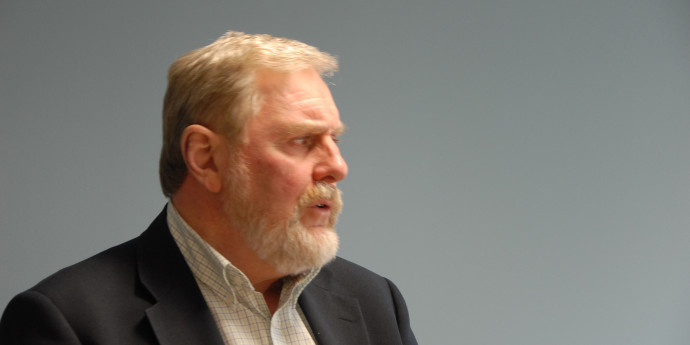Buffett’s annual letter should be required reading
Warren Buffett is full of lessons on how to run a company and manage your investors.

John is the inaugural chairman of Virtual Expos New Zealand Limited, a company that producers virtual events-trade shows, career fairs and conferences – online. He also chairs the advisory board of Productspec Limited, New Zealand's national database of building and interior products.
In addition, John is:
John was the chief executive of the Meteorological Service of New Zealand Limited since it was established as a State Owned Enterprise in 1992 until early 2007.
His established his own company, Growlypaw Limited, in 2005 which helps enterprises grow by providing advice and leadership.
Start-up company Virtual Expos produces virtual events using software that emulates real-world exhibitions and other hosted events. Two of the founding directors of Virtual Expos approached me to do some brainstorming about a concept they had for deploying new software to use this virtual events platform to produce virtual trade shows, job fairs, exhibitions and so on. They felt there was an opportunity for a New Zealand company to adopt this technology and provide it to businesses in New Zealand, primarily for the export market.
We drafted up an initial business plan, did the financials and established that there did indeed appear to be a feasible option. The American supplier of the software agreed to support us by providing the software and his experience of producing virtual events in North America. We officially formed the company in December 2008. There were four founding directors, and we've since added our American partner. It was decided to have a proper board and I was invited to be the chair.
As with any start-up, it required a pretty hands-on approach. My three fellow New Zealand directors are not quite full time but spend a great deal of their working week trying to get the company to the point where it's a commercial success. As chair, I'm probably spending the equivalent of one day a week on Virtual Expos, although this is made up of minutes here and hours there rather than in day-long stints.
I try to ensure that we:
Another of my roles is to use my networks to find avenues that can be explored in the business and political community within New Zealand to support business growth. The others have expertise in business development, marketing, design, technology and communications, whereas, I have strengths in the strategic, financial, and legal side of business.
From the beginning, we held management meetings on a weekly basis. We also have regular, roughly two-monthly board meetings – our shareholder/director from the United States joins these via video link – where we agree the business plan, variations to it, new technological applications and the amount of investment required.
One of the things we did was to ask early on "how much time are we all prepared to put in to get this business off the ground?"
That was when I was able to say "I'm prepared to put in the equivalent of a day a week and let's see how we can best benefit from that." The others made their own commitments.
I wasn't in a position to put in as much time as the others were. But they are very definitely operational managers as well as being directors of the business. I'm the person who comes in for a weekly meeting or reviews documents or provides introductions and from time-to-time challenges the thinking. In the early, rather turbulent times of a start-up decisions need to be made quickly as new opportunities, new technology or new setbacks appear. But such decisions need to be made in the context of the bigger picture and the wider set of long-term objectives we have for the business.
Achieving this is necessary but not easy. Initially there was some confusion in separating out the operational from the strategic decision making. I was acting as the meeting chair and also the secretary and following up on a fairly direct basis. However, we had to ensure that I was able to make a contribution on a day-to-day decision-support basis but not end up doing the job of the chief executive.
I preface my offers of support with, "I'm doing this as part of the team rather than as the chair." If there's something I can do, making a phone call or proofreading a document, I'm doing that in a separate role from that of the chair. But I do those things at the behest of the others, rather than in an independent and arbitrary way because I'm the chair.
For a start-up like ours, rolling out a new technology against a back-drop of rapid change, we're trying to steer a course through what is largely uncharted territory. To do this we set up a structure to make sure we are as situationally as aware as possible at both the macro and the micro level.
Decisions need to be made quickly as new opportunities, new technology or new setbacks appear, but such decisions need to be made in the context of the bigger picture and the wider set of long-term objectives we have for the business.